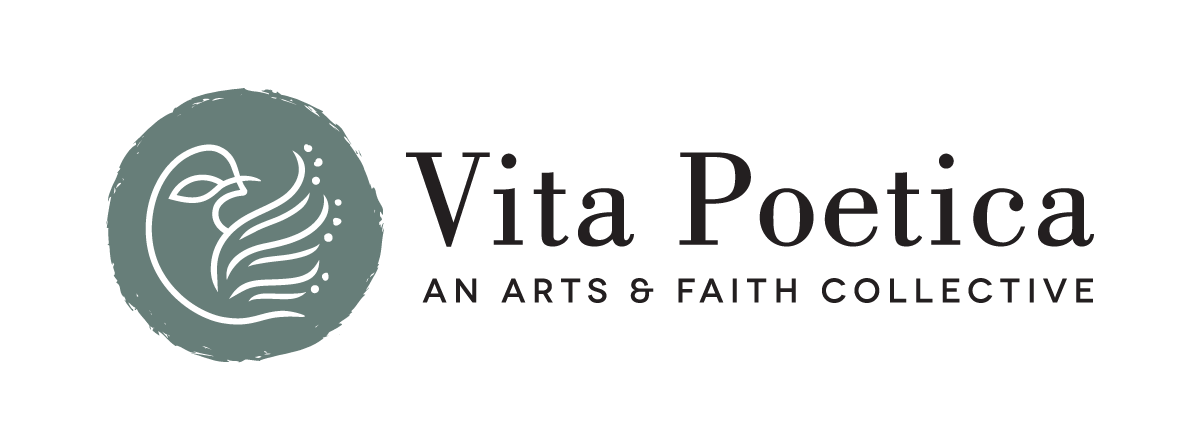Out of Multitudes, One
Letter from Co-Editor Caroline Langston
The night of Eid al-Fitr last week, my disabled husband’s former home care nurse texted me blessings at sunset from his all-Sierra Leonean mosque that, I found out, was just down the road from my house.
We’re on the lip of Passover, too. As I write, I’m thinking not so much about the marked doorways that steered the angel’s passage, but—my mind moving laterally here—about my good friends’ chuppah that was held overhead at their wedding, in a green Connecticut garden some 22 years ago. The chuppah had been constructed of one spouse’s heirloom, homemade lace, carefully joined to the pieces of the other spouse’s historic family tallis, the whole improbably stitched together yet at the same time a unified whole.
In that chuppah is a mighty metaphor for what we’re doing here at Vita Poetica, both in terms of art and in terms of life. We are creating a new whole by sewing together our collective works, the heirlooms we’ve drawn from experience, the fresh perspectives we have embroidered. (And yes, too, I’m also thinking about the artworks of recently passed Faith Ringgold, who arrayed painting and patchwork into a lush and textured whole.)
Accordingly, we’ve arrayed a bright spectrum of voices for you in this edition of VP–which once again outline the boundaries of faith and spirit. In particular, we’re delighted that we are sharing the first published works of two authors, Kara Applegate’s poem “Misericordia,” which imagines the boundaries of Heaven as daringly porous; and K.D. Battle’s “Self-Help Sonnet I,” which renders the memory of a Maine outdoor camp and its children campers as lifesaving, vibrant.
Similarly dazzling, Ping Yi Yee’s poem “Fortune Center” bursts forth with the particularity of each of the customers in an ice cream shop in an Asian shopping center–not only their appearances, but their cultures and faiths and prayers.
As you read, observe how the notion of “multiplicity” reverberates through the poems, fiction, essays, and practices. In our contemplative practice feature, even, “A Journal of Many Colors,” Rachel Berry offers us a guide to using color to help think through and organize the various creative strands our mind might be pursuing, in order to make sense of them.
Once again–as so often in Vita Poetica–we see that out of these “multitudes” can come a shared, and sometimes unexpected, oneness. Isabel Chenot’s “pain is not an ark” limns the extreme isolation to which a sufferer gives witness–and how at its bottom, spiritual companionship can be found even there. Gerburg Garmann's Miriam deftly knits together text, painting, and music into a textured whole.
And not only sharing here–there is also shelter, just as the symbolic meaning of the chuppah is to provide a shelter for the couple being wed, even as its sides are open to the weather and others. Chris Drew’s story “Saturday Night at the Dairy Queen,” in fact, offers a particularly literal kind of shelter for a group of staff and customers caught in a 1990 tornado.
This shared shelter can even transcend time and space. You’ll just have to read to the end to understand the poignance of the ending of Helen L. Conway’s essay, “Shoah Shoes,” about her conversion to Judaism: “The kabbalah teaches gilgul neshama, the reincarnation of the soul. Rabbi Zalman Schacter-Shalomi said: to where could six million return all at once? To the bodies of the gentiles, that is where.”
As always, there is much for us to talk about, and much to keep us thinking.
